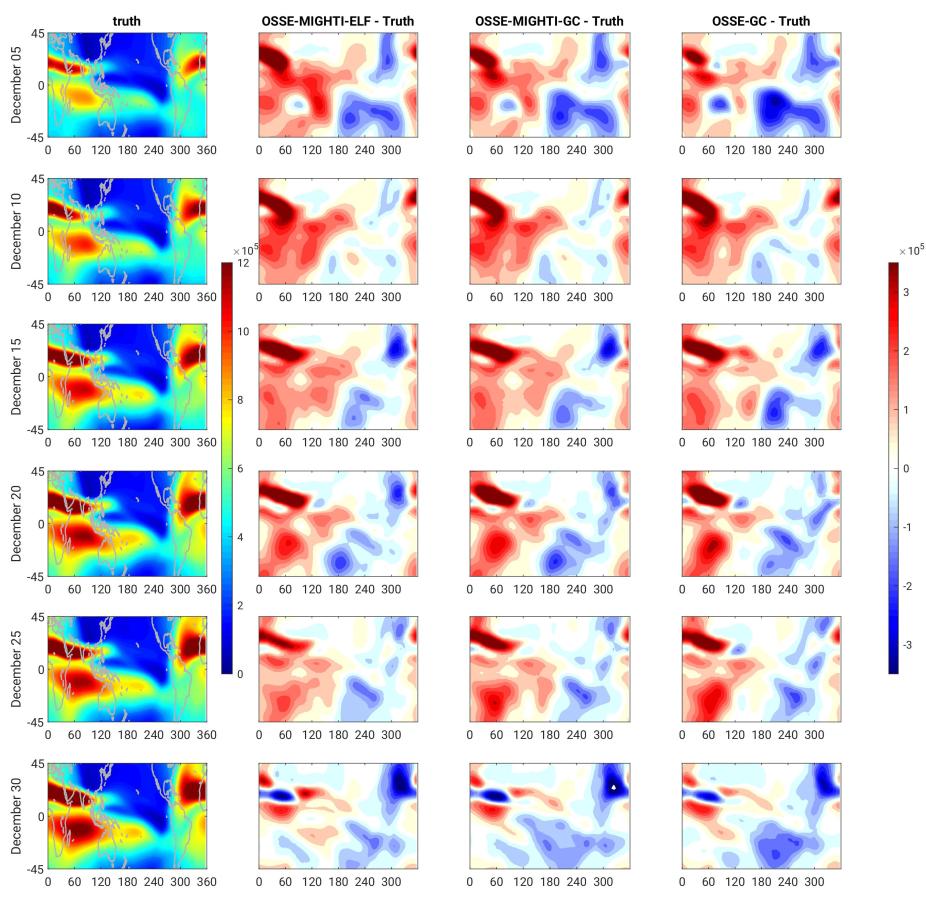Publication: Journal of Geophysical Research, Space Physics; Authors: Chih-Ting Hsu, Nick Pedatella, Jeff Anderson

Three Observing System Simulation Experiments (OSSEs) are carried out in this study. Thermospheric wind and temperature states are updated using synthetic data sampled from a Nature Run (NR) in this experiment. The updated thermospheric states will further change the plasma drift and electron density in the ionosphere. This figure shows the longitude-latitude maps of NmF2 from the NR (first column) and the difference of NmF2 between OSSEs and NR (second to fourth columns) at six different times. From top to bottom rows are maps at 1200 UT on 05, 10, 15, 20, 25, and 30 December 2009. From the second to fourth columns are the difference of NmF2 between OSSE-MIGHTI-ELF, OSSE-MIGHTI-GC, and OSSE-GC and NR.
The upward plasma drift and equatorial ionization anomaly (EIA) in the Earth's ionosphere are strongly influenced by the zonal electric field, which is generated by the wind dynamo. Specification and forecasting of thermospheric winds thus plays an important role in ionospheric weather prediction. In this study, we assess the impact of assimilating thermospheric wind observations from the Michelson Interferometer for Global High-resolution Thermospheric Imaging (MIGHTI) instrument on NASA's Ionospheric CONnection (ICON) explorer satellite on the ionospheric electrodynamics. Empirical Localization Functions (ELFs) of ICON/MIGHTI zonal and meridional winds are also computed and applied to our data assimilation experiments, enabling improved assimilation of the ICON/MIGHTI wind observations. A set of Observing System Simulation Experiments (OSSEs) are performed using the National Center for Atmospheric Research (NCAR) Whole Atmosphere Community Climate Model with thermosphere-ionosphere eXtension (WACCMX) with data assimilation provided by the Data Assimilation Research Testbed (DART) ensemble adjustment Kalman filter. The results show that assimilating the ICON/MIGHTI wind observations with the ELF improves the zonal and meridional wind root mean square error (RMSE) by 16-18% and 7-10%, respectively. The improved wind specification further improves the low-latitude ExB vertical drift RMSE by about 18%. The response of electron densities is slower, and the overall impact is smaller. The improvement of the ionosphere F-region maximum electron density (NmF2) between -45 to 45 degree is about 8% after 18 days of data assimilation.